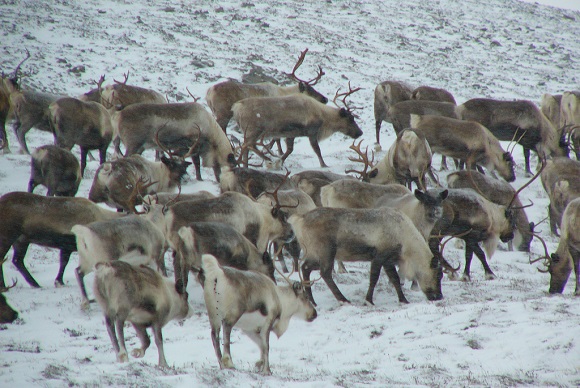A melting world
The West world, with its desire for expansion and exploration of new and unknown territories, has deprived indigenous communities of their traditional methods of life and culture. The Arctic tribes have not either been an exception.
The stories about polar explorations are plenty of epic feats and tragedies. There are also books written by loners who have lived in the Arctic for some time. Of these, I highly recommend one by Barry Lopez, Arctic dreams (MacMillan, London 1986), which won the American Book Award for non-fiction books. And there are notable films about the Arctic and its people. One of them, Nanook the Eskimo (1922), by Robert Flaherty, is the first and one of the best documentaries in the history of cinema, although it does not reflect the real life of the Eskimos of that time: it is a reconstruction of traditional living that by then almost did not exist anymore. Another film of magnificent photography is Nicholas Ray’s The savage innocents (1960), based on Hans Ruesch’s roman Top of the world, with Anthony Quinn as an Inuit. It is a fictional story about the protagonist's contact with the "civilized" world: the drama is provoked by a clumsy missionary and by the desire of the Inuit for a rifle to guarantee food to his family. Bob Dylan made a song called Quinn the Eskimo, based on this movie. If someone wants a fictional story of the last 30,000 years in part of the Arctic, he can read Alaska, by James A. Mitchener, one of the many voluminous books of this author about different parts of the world.

In the Arctic, if we accept the definition of the Arctic Human Development Report, there are currently around 4 million people living in 8 countries (Iceland, Norway, Sweden, Finland, Denmark, Russia, USA and Canada). Around 10% of this population is indigenous (Sami or Lappish in the Scandinavian countries, ninets, Khanty, Evenkis, Koriakis and Xukxis in northwest Russia, Aleuts and Yuppies in Alaska, and several groups of Inuits in Alaska, Canada and Greenland), and speaks languages of diverse origins. The population took place in the Upper Paleolithic and, since the Middle Age, the people of the north had trade with the south and then with fur trappers. Today, while the Indians live mostly in scattered small towns, the population arriving from abroad does so in cities.
Life in the Arctic is marked by seasonality: summer allows an enormous abundance of terrestrial and marine life. The large herds of reindeers (domesticated) and caribous (which have never been domesticated, although they are almost identical to reindeers) arrive to the tundra in the spring and return south in the fall, followed by the Indians, who are hunters in North America and shepherds in Eurasia. Marine mammals also form large contingents and are hunted in water in summer and on ice in winter.

In Europe, the cultures of the Arctic tundra are strongly linked to reindeer domestication and ranching. In the taiga, reindeer are more used for transport and food comes from hunting, active or with traps, and fishing. In the Asian coasts, it is the dogsled and not the reindeer one the most used vehicle and almost all the food is taken out of the sea. The American Eskimos were much more isolated from the Indian peoples of the south, so trade with them was limited. They have lived fishing and hunting, but today people in the north very often buy their food at the supermarket, a fact which has important social and health implications (because their tendency to accumulate fat as a biological adaptation to cold makes them more prone to obesity).
We have pointed out in another article the transformation linked to drilling for oil and gas, oil pipelines and roads, with the increase of traffic by land, sea and air, and this happens in a large part of the Norwegian, Russian or American Arctic. We can add the large zinc and lead mines of Baffin and the Little Cornwallis, the permafrost’s fusion that makes building difficult and expensive, the gradual reduction of ice in summer and, perhaps even more important, the establishment in the region of people with great economic power and no knowledge of the country. Recently, a direct relationship between ice loss and CO2 emissions has been verified in the Arctic: For each tone emitted, 3.03 m2 of ice are lost in September, so if 1,000 Gt more were emitted, there would be no ice left during this time of the year (Notz and Stroeve, 2016). At the current rate, this will occur by mid-century.

In his book, Lopez explains the first contacts of the Eskimos of the south of the island of Bylot with the English whalers who bought polar bear and seal fur, tusks and walrus grease and handicrafts, things that became a important complement to the whales for the economy of the boats. They also captured animals for zoos and used to have sex with Eskimo women.
In the Bering Sea, from 1850, the American whalers introduced flour, tea, coffee, tobacco, sugar, weapons and ammunition, alcohol, ideas and behavior, which altered many things in the lives of the Inuit (the theme of The savage innocents). His society went from a survival economy based on hunting to a mercantile economy, and his entire value system was modified. Eighty years later, with the depression beginning in 1929 and because the fur market fell, some Eskimo populations that had settled further south to enjoy the advantages of civilization came back to north to fish and to hunt caribou, but this trend reversed at the end of the decade. Throughout the Arctic similar movements of groups of about a hundred people have tried to return to their traditional way of life. But much vocabulary from the original languages has been lost and traditional social, religious, political and dietary customs have been profoundly altered.

Traveling to high latitudes was not easy. Since the times of the Vikings, many Europeans had died in the attempt, due to "freezing and gangrene, scurvy, poisoning by eating polar bear liver, destroying the ship by ice or fire," says Lopez. But in 1832, in Bylot, the English found the Eskimo villages desert because everybody had died of diphtheria and smallpox that the visitors unintentionnally left them in the previous trip. Tuberculosis and poliomyelitis also spread and the mortality was enormous: "historians have suggested that an 90% estimate of the indigenous population is not a nonsense". As for the survivors, their way of life had changed forever.
Referenced paper:
Notz D., Stroeve J. (2016). Observed Artic sea-ice lost directly follows anthropogenic CO2 emission. Science, 354, 6313: 747-750.







